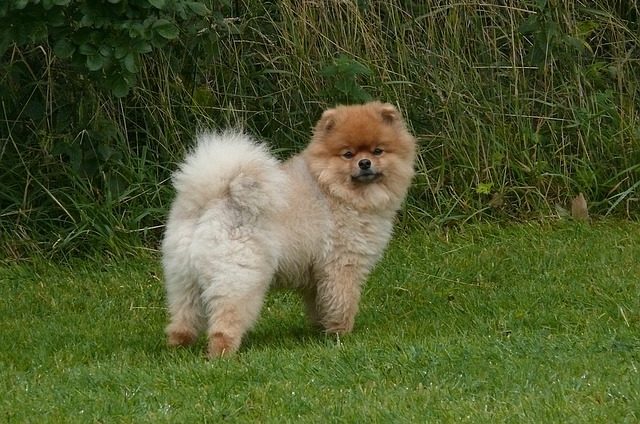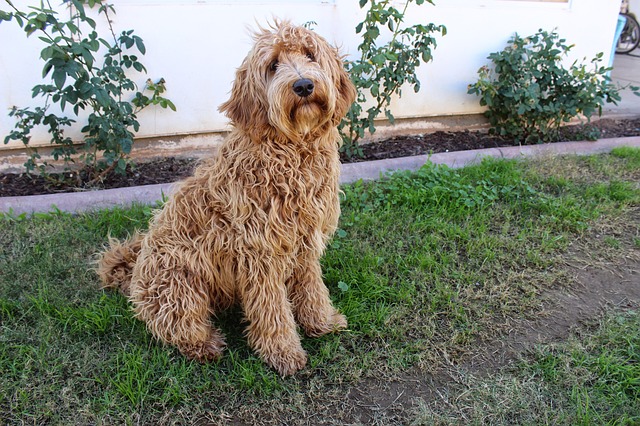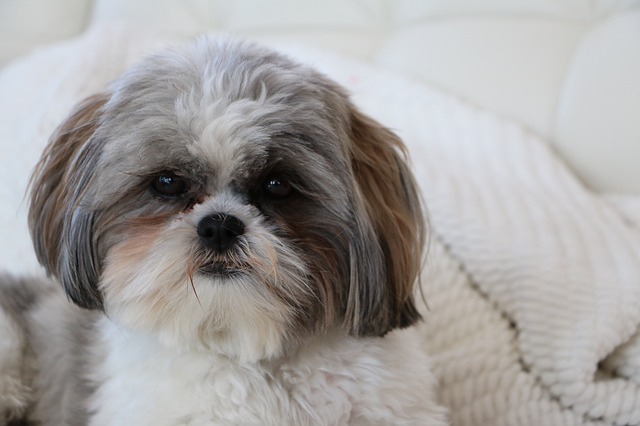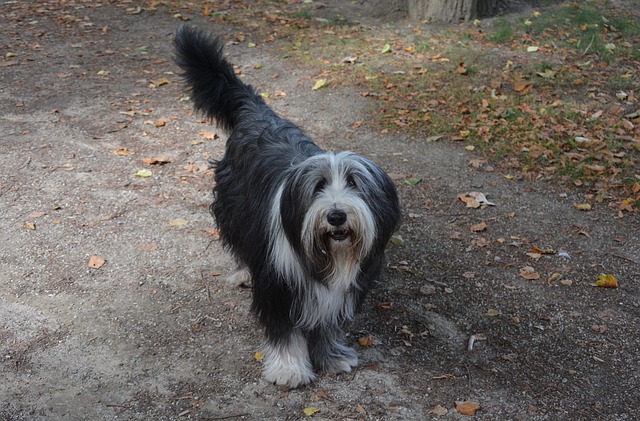There are many wonderful advantages to having a long-haired pooch. They are fun to snuggle, many breeds shed less than their short-haired cousins, and with proper care and grooming, they are exceptionally beautiful.
On the downside, all that extra hair can act like velcro, collecting leaves, dirt, and worst of all, poop.
If your long-haired dog has ever fallen victim to the dreaded “poop butt,” read on for tips and tricks that could help you prevent and manage this problem.
1. Keep Hair Neatly Trimmed

Whether you prefer your dog’s hair long and silky or trimmed short in a “puppy cut”, grooming is essential for preventing fecal matting. According to the AKC, regular grooming should be done about once a month depending on breed, hair length, and type of coat.
If you use a professional groomer, ask that he or she trim your pooch thoroughly around the anus, rear legs and under the tail. Many people also request a short trim around the penis or vulva to prevent urine staining and reduce the likelihood of fecal matter infiltrating the urinary tract and causing infection. This type of hygienic trim is often referred to as a “potty patch”.
While home care measures such as brushing, bathing and spot-cleaning are essential for owners of long-haired dogs, trimming should be left up to the professionals unless you have groomer training and experience.
2. Feed a High Quality/High Fiber Diet

Soft, loose stools are far more likely to become caught in your dog’s hair than firm, well-formed stools. In dogs free of intestinal issues, a consistent high quality diet should be enough to achieve healthy bowel movements.
Whether you prefer commercial dog food, homecooked meals or a raw diet, ensure your pup gets all the essential nutrients he needs and consumes an adequate amount of fiber. Speak to your vet to determine the best diet for your individual dog.
Tip: Canned pure pumpkin is a palatable source of dietary fiber you can inexpensively add to your dog’s food. It helps sooth the digestive tract, absorbs excess moisture and firms the stool – plus, most dogs love it!
3. Consult Your Vet

Matted poop in the fur around a dog’s anus is so common it even has a veterinary term – pseudocoprostasis – and if left untreated, it can become far more than just a hygiene issue. The combination of fecal matter and hair can completely obstruct the rectum, making it impossible for your dog to poop.
“Not being able to pass stool is a big problem,” says Dr. Ann Hohenhaus, staff doctor at NYC’s Animal Medical Center, “and your dog may start vomiting, stop eating, or even develop diaper rash under the matted fur and feces.”
If your dog suffers from chronically soft stools, constipation, or fecal impactions, see your vet. He or she will run laboratory tests to determine if your pup has parasites, an infection, or a chronic condition like inflammatory bowel disease. Your vet staff can also help you formulate a healthy diet plan.
Related: 12 Best Diapers for Dogs
4. Keep Wipes Handy for Quick Clean-Up

Unfortunately, a little bit of poop is most likely going to get caught in your long-haired dog’s fur from time to time. Cleaning it up quickly when the stool is still moist and pliable will help you prevent a small problem from compounding into a much larger one.
Moist grooming wipes are gentle on your dog’s skin and help deodorize the hair coat as they clean.
5. Use Waterless Shampoo Between Baths

Dogtime recently reported on an exciting new product called HygenaPet, invented by a team of students from the Cornell University College of Veterinary Medicine. It is a solution of beeswax and carnauba wax that is sprayed directly onto the dog’s bum to prevent feces from sticking.
The judges of the 2018 Cornell Animal Health Hackathon were so impressed with HygenaPet, its inventors took the grand prize! Sadly, the product is not yet commercially available.
As we anxiously await its arrival, waterless shampoos are a great way to clean up your dog’s fanny between bath times. Overbathing can dry your dog’s skin and make the hair dull and lifeless. Waterless shampoos remove feces and leave your dog fresh and clean without the ordeal of a full bath.
 Toledo, United States.
Toledo, United States.
